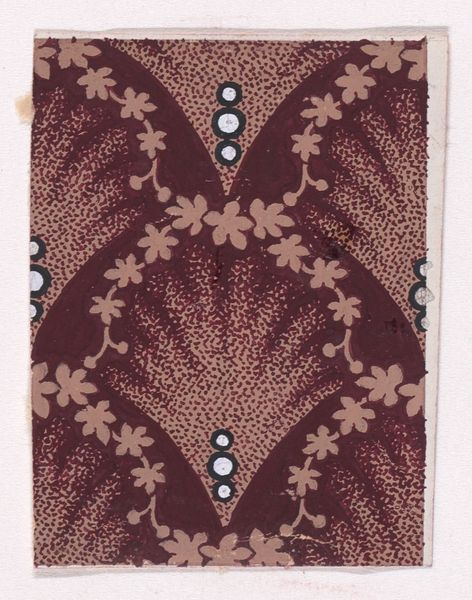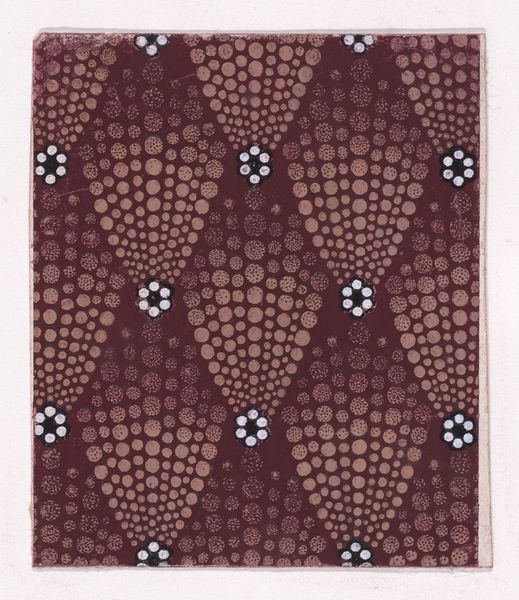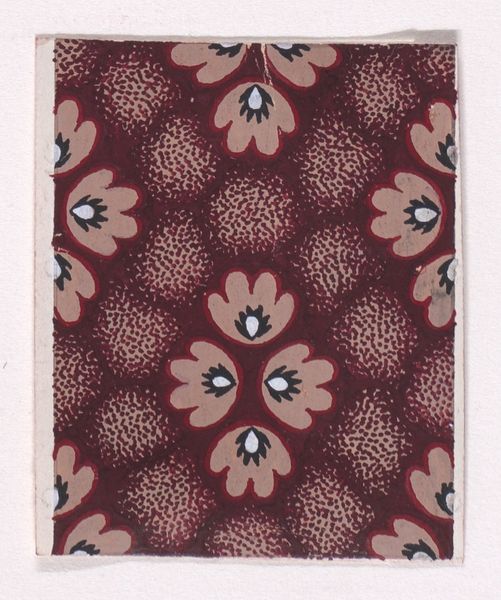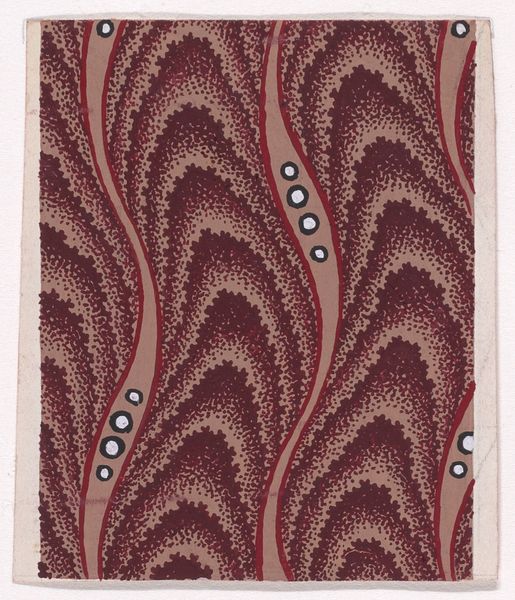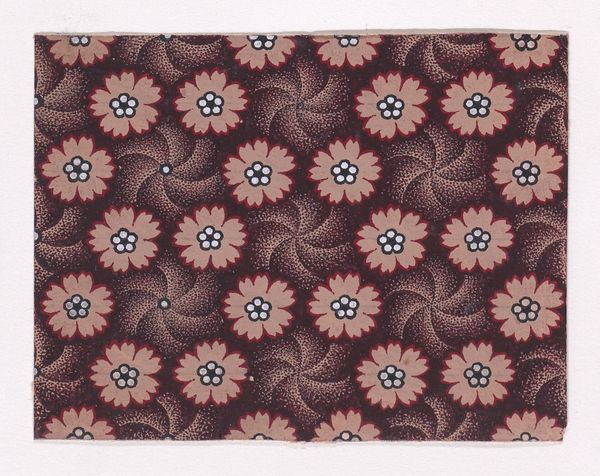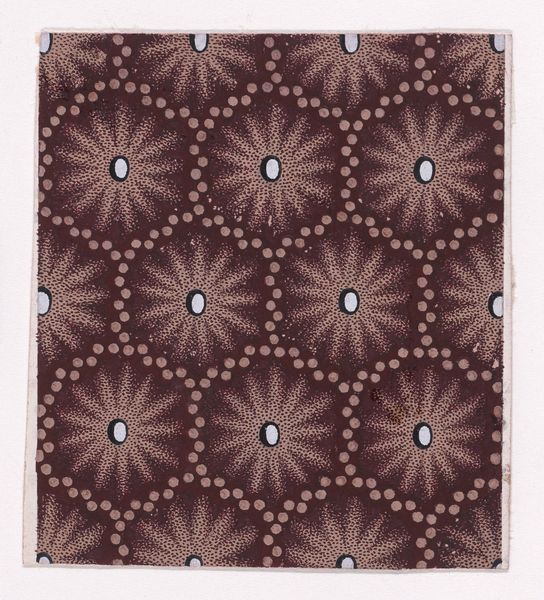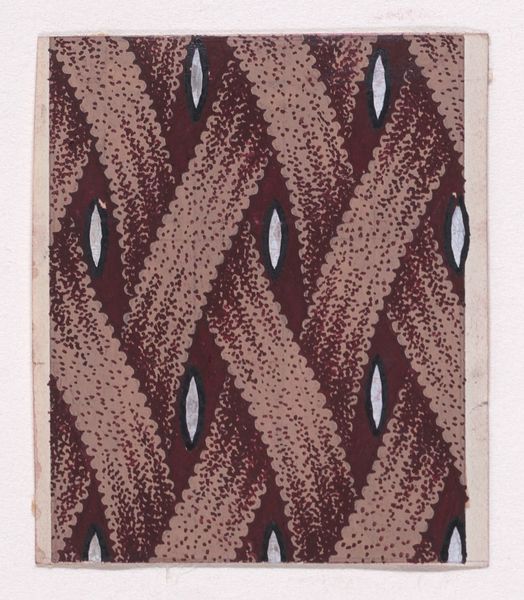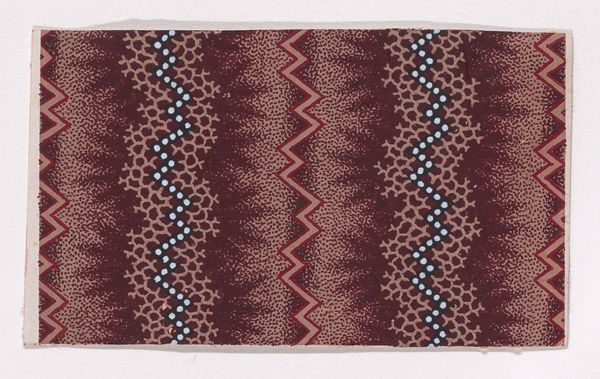
Textile Design with a Honeycomb Pattern of Garlands of Dots and Pearls over a Stippled Background 1840
0:00
0:00
drawing, print, textile
#
drawing
# print
#
pattern
#
textile
#
organic pattern
#
geometric
#
textile design
Dimensions: Sheet: 2 7/16 × 1 7/8 in. (6.2 × 4.8 cm)
Copyright: Public Domain
Editor: This textile design, “Textile Design with a Honeycomb Pattern of Garlands of Dots and Pearls over a Stippled Background,” is from 1840 by an anonymous artist, currently housed at the Met. I’m really drawn to how tactile it looks, like you could feel all the little dots. What do you see in this piece? Curator: I'm intrigued by the industrial context implied here. While we appreciate the pattern aesthetically, consider the labor involved in producing such a design, especially in 1840. Think about the materials: the paper, the inks, the tools used for printing. How do these materials reflect the economic and social conditions of the time? Was it mass produced, or crafted? Editor: That’s interesting, I was just focusing on the visual repetition of shapes. But you’re right, somebody had to make this design into something repeatable, right? I guess that moves it from just “art” to a product, potentially? Curator: Exactly. This blurring of the lines between high art and craft is crucial. How does the function of textile design – its inherent reproducibility and connection to everyday life – challenge traditional art historical narratives focused on unique, individual masterpieces? Is it the design itself that matters, or how it was produced and consumed? Editor: So you're saying that understanding *how* it was made helps us understand its value, maybe even more than just admiring its beauty? Is it more valuable due to the process? Curator: Precisely. Consider where the materials came from, the techniques used – were they innovative for the time? Who would have used this textile, and what does that tell us about social class and consumer culture? That shifts our perception. Editor: I see, it’s like the design is almost secondary to the whole story of its creation and its impact on society. Thank you! I will look at art so differently now! Curator: Glad to have shifted your perspective! Looking at the whole process often offers new insights.
Comments
No comments
Be the first to comment and join the conversation on the ultimate creative platform.

